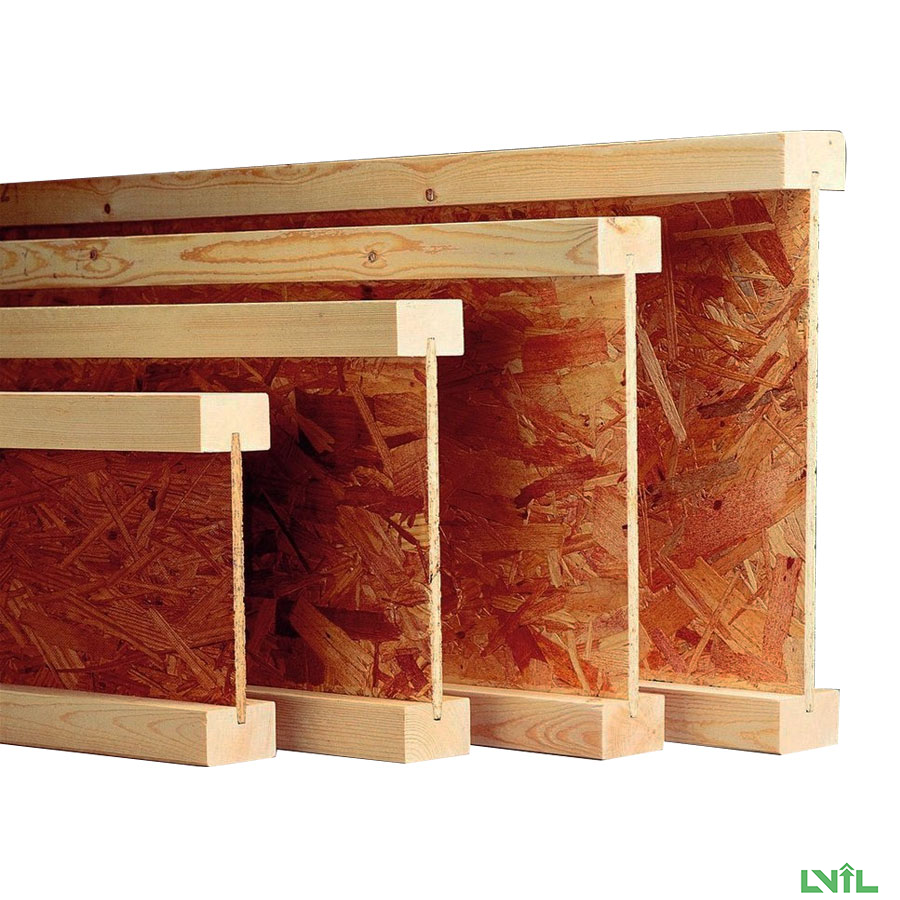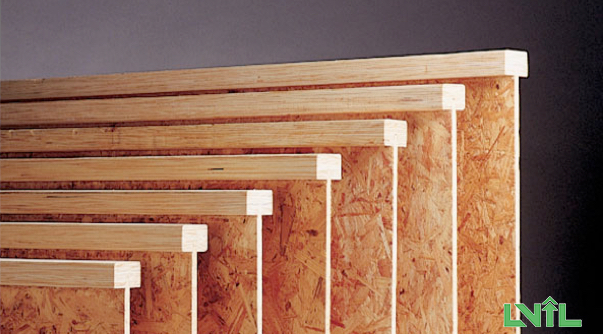Engineered wood products composed of oriented strand board (OSB) or plywood, shaped into an "I" configuration.
Copyright © RAINFOREST WOOD CO.,LTD. All Rights Reserved.
I-joists, also known as timber I-joists, are widely employed in both residential and commercial flooring systems worldwide. These wood-based I-joists offer a combination of lightness, impressive strength-to-weight ratios, and expansive spanning capabilities. Powered by Vietimber
These I-joists feature flanges positioned at both the top and bottom. The primary load-bearing role within an I-joist is performed by these flanges, which are commonly crafted from high-strength timber due to their critical function.
www.vietimber.com
Connecting the top and bottom flanges is a vertical web. This web functions akin to the chords or metal webs found in trusses, essentially maintaining separation between the top and bottom flanges. Typically constructed from thinner timber materials such as Plywood or Oriented Strand Board (OSB), the web plays a vital role in the I-joist structure.

Powered by Vietimber
Engineered wood I-Joists are celebrated for their superior strength-to-weight ratio. These joists are crafted using engineered materials like laminated veneer lumber or oriented strand board, offering remarkable structural stability. Their consistent construction minimizes issues like warping, twisting, or shrinking, ensuring long-lasting stability and reliability in various construction projects. https://www.vietimber.com
One of the standout advantages of I-Joists is their ability to span longer distances compared to traditional lumber. This characteristic provides architects and builders with the freedom to create more expansive and open floor plans. Longer spans offer increased design flexibility without compromising structural integrity, allowing for innovative and spacious architectural layouts.
Manufactured under strict quality control measures, engineered wood I-Joists boast high consistency in dimensions and strength. Builders benefit from this predictability during construction, resulting in simplified installation processes, reduced material waste, and precise installations. This consistency streamlines the building process, leading to efficient and reliable construction outcomes. https://www.vietimber.com
Opting for engineered floor I-Joists aligns with sustainable building practices. These products efficiently utilize smaller trees and reduce overall waste, contributing to the conservation of natural resources. Additionally, the manufacturing process of I-Joists generates minimal waste compared to traditional lumber, making them an environmentally conscious choice for eco-friendly construction projects.
Unlike solid wood, engineered wood I-Joists showcase exceptional resistance to common issues such as warping and shrinkage. This durability ensures that the structural integrity remains intact over time, reducing the need for frequent maintenance and providing long-term reliability for building structures. RAINFOREST WOOD CO.,LTD
 www.vietimber.com
www.vietimber.com
In conclusion, the benefits of utilizing engineered wood I-Joists in construction projects are substantial. From their exceptional strength and longer spans to their consistency, environmental sustainability, and resistance to common issues, these joists offer a compelling case for modern construction practices, enabling architects and builders to create structurally sound, innovative, and sustainable buildings.
https://www.vietimber.com